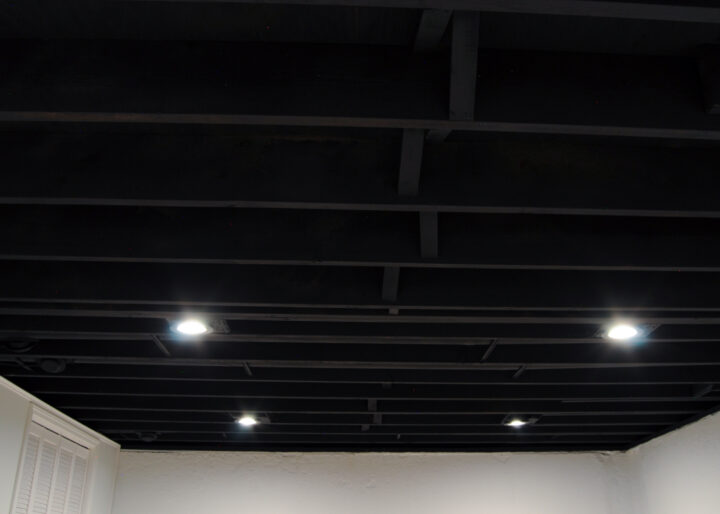How Much Does It Cost to Paint an Exposed Basement Ceiling? An exposed basement ceiling can be a great way to add character and style to your home. It can also help to improve the appearance of a basement that is in need of a makeover. However, painting an exposed basement ceiling can be a bit of a challenge. The ceiling is often uneven and textured, which can make it difficult to get a smooth finish.

Cost Factors
The cost of painting an exposed basement ceiling will vary depending on a number of factors, including:
- Size of the ceiling: The larger the ceiling, the more paint you will need, and the more time it will take to paint. For example, a 1,000 square foot ceiling will require about 10 gallons of paint if you are using a single coat.
- Condition of the ceiling: If the ceiling is in poor condition, you may need to repair any cracks or holes before you can paint. This can add to the cost of the project.
- Type of paint: The type of paint you choose will affect the cost. Latex paint is the most common type of paint used for exposed basement ceilings, and it is relatively inexpensive. Oil-based paint is more expensive and requires more time to dry.
- Painting supplies: You will need to purchase paint brushes, rollers, and other painting supplies.
- Labor costs: If you hire a professional painter, you will need to factor in labor costs.
DIY Costs
If you choose to paint your exposed basement ceiling yourself, you can expect to pay about $0.50 to $1 per square foot for materials. This includes the cost of paint, brushes, rollers, and other supplies.
For example, if you have a 1,000 square foot ceiling, you can expect to pay about $500 to $1,000 in materials.
Here are some additional details about the cost of materials for DIY painting:
- Paint: Latex paint costs about $20 to $30 per gallon. You will need two coats of paint, so you will need about 20 gallons of paint for a 1,000 square foot ceiling.
- Brushes and rollers: You will need a paint brush for cutting in around the edges of the ceiling and a roller for painting the larger areas. You can purchase a set of brushes and rollers for about $50.
- Other supplies: You will also need a drop cloth to protect your floors and a ladder to reach the ceiling. You can purchase a drop cloth for about $20 and a ladder for about $50.
Professional Painting Costs
If you hire a professional painter, you can expect to pay about $2 to $3 per square foot for labor. This includes the cost of prep work, painting, and cleanup.
For example, if you have a 1,000 square foot ceiling, you can expect to pay about $2,000 to $3,000 in labor costs.
Here are some additional details about the cost of labor for professional painting:
- Prep work: The painter will need to prepare the ceiling by cleaning it and repairing any cracks or holes. This can add about $100 to $200 to the cost of the project.
- Painting: The painter will apply two coats of paint to the ceiling. This will take about two days to complete.
- Cleanup: The painter will clean up the mess after they are finished painting. This includes removing the drop cloth and ladder.
Read too: Do All Popcorn Ceilings Contain Asbestos
Total Costs
The total cost of painting an exposed basement ceiling will depend on the size of the ceiling, the condition of the ceiling, the type of paint you choose, and whether you choose to do the work yourself or hire a professional painter.
DIY Tips
If you choose to paint your exposed basement ceiling yourself, here are a few tips to help you get a smooth finish:
- Prepare the ceiling properly. Make sure the ceiling is clean and free of dirt, dust, and cobwebs. You can use a vacuum cleaner or a broom to clean the ceiling. If the ceiling is dirty or dusty, it will be difficult to get a smooth finish.
- Apply a coat of primer. Primer will help the paint adhere to the ceiling. You can use a latex primer or an oil-based primer.
- Apply two coats of paint. This will help to create a smooth, even finish. You can use a latex paint or an oil-based paint.